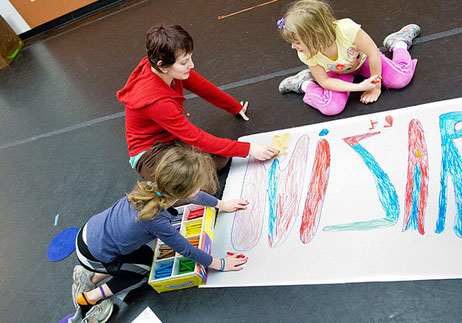By Ian Quillen
In developing countries, where smartphones and dependable cellular networks are still scarce, it’s been difficult to gauge the real impact of the mobile education movement. But with the combination of different factors — the advent of new technology, decreased pricing for data, a worldwide lust for mobile education, and a persisting patience for smaller screens and lower connection speeds in nations where there is little alternative — the landscape in developing countries may be at a tipping point.
Nickhil Jakatdar, who founded the mobile video company Vuclip five years ago, said the stakes for mobile phone users in developing countries are high.
“It’s almost like they’re evolving in a different way,” Jakatdar, a native of India, said of people who use lower-end mobile phones in the developing world. “When they see a small screen, they don’tjust see a small screen. They see a great opportunity.”
“By no means is that experience (on low-end devices) what you would get on an iPhone,” Jakatdar said. “But it’s way better than what one can imagine when one thinks, ‘Oh, it’s a small screen on a lower level network.’”Vuclip already has about 45 million unique monthly users who log onto the company’s platform to watch mobile videos that automatically adjust their resolution and other features based on the level of each user’s network and device, especially for those with low-end devices.
The potential is huge for education-related content, he said. Though Jakatdar isn’t pushing for mobile learning to replace formal schooling where the latter is available, he said for users who can’t afford a face-to-face secondary or post-secondary education, or who want supplemental help in learning that videos can provide, the service could be beneficial.
Another factor that’s shifting the landscape is availability and cost of data. While data in developing countries has traditionally been more expensive for users to purchase than in developed nations, its price appears to be falling more rapidly during the past 12 months, Jakatdar said. Further, he said selling data in a packet model format similar to how it’s sold to smartphone users in the United States and other developed nations is gaining steam. That in turn may encourage users to have less concerns about the amount of data they consume, and thus seek more video content.
A report from the International Telecommunication Union released last October found the cost of data to drop about 30 percent worldwide between 2008 and 2011, though it actually dropped more substantially in developed nations than in developing ones.
With Vuclip following the two-tiered model that has become a standard for many startups—offering free services to most users while charging users who wish to purchase premium content and features—the hope appears to be that delivering educational content to developing countries will drive up the company’s user numbers, while assisting an educational shift Jakatdar says is coming.
“I still am not sure whether a full-blown education on mobile (technologies) is going to be on the cards in the next few years,” Jakatdar said. “That seems like a little bit of a stretch practically. But I definitely see mobile being a greater supplement to education taking off.”
Vuclip’s data on its users shows that even low-end mobile devices are far from being commonplace worldwide; Jakatdar said about 70 percent of the company’s visitors are male, and in some regions—particularly the Middle East—skew toward the middle and upper classes. But in India, a nation that accounts for more than a quarter of the company’s monthly traffic, users run the gamut of socioeconomic classes, and in the U.S., users are more likely to be from low-income communities, he added.
Jakatdar says he still sees other shifts that need to happen before that vision is realized. For one, he says educational video publishers will need to shorten more of their clips into the two- to three-minute range that is more accessible for viewers.
“That seems to be the sweet spot of what a consumer can consume at any one stretch,” Jakatdar said. “The two-to-three-minute clip I expect will remain popular for quite some time.”
MOBILE EDUCATION TRENDS
As Vuclip announced earlier this month the launch of their new educational video portal, which will feature a growing collection of free online content from the Khan Academy and other authors, it also produced survey data that Jakatdar says shows a widespread belief in video as an opportunity for education.
In the survey of 80,000 Vuclip users, more respondents indicated they would prefer to use their mobile phones as their primary source for obtaining an education than indicated a preference for a traditional brick-and-mortar school. While Jakatdar concedes those results may partly be a function of who is using Vuclip’s technology, he said it also points to the expense of formal education in the developing world compared to the dropping costs of data consumption.
Other results from the company’s survey:
- 35% of American respondents say that learning on their mobile phones would be their top choice for learning, compared to 30% who indicate that school would be their ideal channel for education.
- 54% of Americans said they would be “very interested” in receiving education via their mobile phones and an additional 21% said they would be “somewhat interested.” For males under 17, the percentage of those “very interested” grows to 62%.
- 41% of Americans said career development is the number one learning goal.
- http://blogs.kqed.org/mindshift/2013/02/what-will-it-take-to-bring-mobile-ed-work-to-the-developing-world/#more-27178







